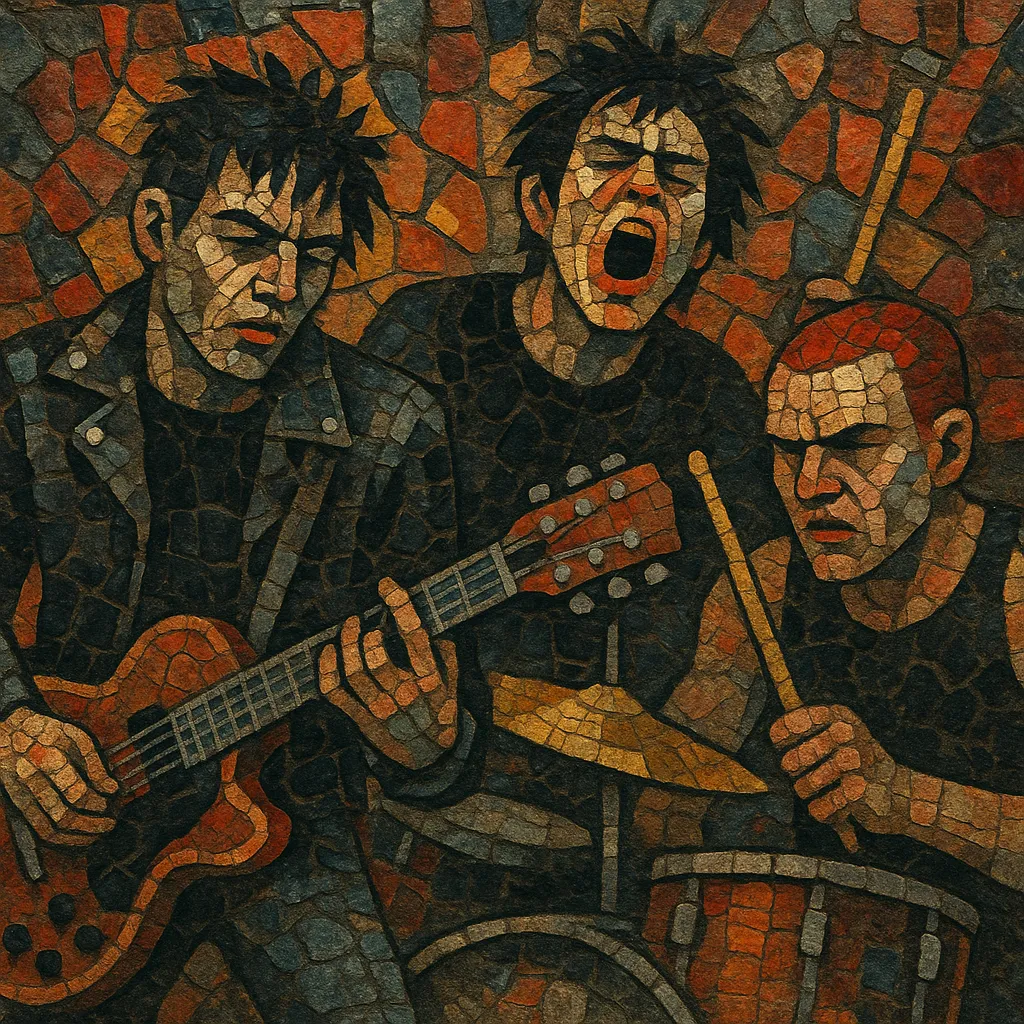
Punk blues is a raw, high-energy fusion of the emotional grit of blues with the speed, attitude, and minimalism of punk rock. It takes the 12‑bar forms, pentatonic riffs, and call‑and‑response phrasing of traditional blues and performs them with overdriven guitars, shouted vocals, and a fiercely propulsive backbeat.
The style favors lo‑fi, live-in-the-room production, skeletal arrangements (often just guitar, vocals, and drums), and hypnotic, repetitive riffs. While rooted in American blues traditions, punk blues rejects polish and virtuosity, channeling urgency, abrasion, and cathartic release.
Punk blues emerged in the United States in the late 1970s as punk rock musicians drew directly from early electric and Delta blues. Bands began stripping blues down to its most primal elements, playing it faster, louder, and with an anti‑virtuosic edge. The Cramps injected swampy, rockabilly‑tinged menace, and The Gun Club (Los Angeles) crystallized the template by marrying punk’s urgency to haunted, slide‑laced blues forms.
In the early 1980s, Australian band The Scientists developed a sludgy, feedback‑drenched take that proved highly influential. Around the same time, Nick Cave’s The Birthday Party pushed a feral, nocturnal intensity that fed into the genre’s dark mystique. These acts emphasized repetition, space, and distortion, aligning punk blues with the emerging noise rock underground.
The 1990s saw a decisive surge. Pussy Galore and Jon Spencer Blues Explosion in New York folded in brittle noise, funk shards, and swagger, while Detroit’s The Gories and Memphis’ The Oblivians demonstrated the power of two‑ or three‑piece setups tracked live to tape. Collaborations between Jon Spencer and Mississippi bluesman R.L. Burnside spotlighted cross‑generational exchange, renewing interest in stripped, hypnotic grooves.
The White Stripes brought punk blues’ duo minimalism and open‑tuned slide riffs to global audiences, catalyzing a garage rock revival and influencing bands like The Black Keys in their raw early period. The style’s ethos—lo‑fi production, relentless riffing, and visceral delivery—continues to permeate indie rock, garage punk, and noise rock, sustaining a durable lineage from juke joint roots to modern DIY stages.

